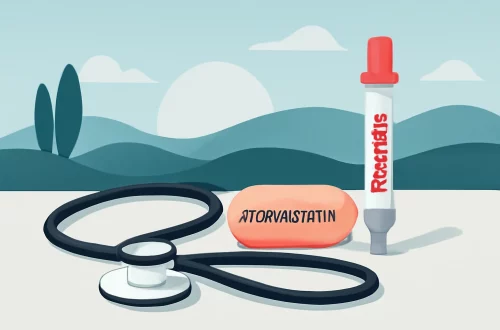
Beware of the Poisonous Cactus: Identifying and Avoiding Danger
Cacti are often associated with arid landscapes and resilient beauty. These unique plants have evolved to thrive in harsh conditions, displaying a remarkable range of shapes, sizes, and colors. While many cacti are harmless, there exists a category of these plants that can pose serious risks to humans and animals alike. The allure of the cactus can sometimes mask its dangerous potential, leading unsuspecting individuals to experience negative consequences.
From the prickly pear to the towering saguaro, the various species of cacti have adapted to survive in their environments, but not all adaptations are benign. Some cacti possess toxic properties that can cause adverse reactions upon contact or ingestion. Understanding how to identify these hazardous varieties is crucial for anyone who enjoys hiking, gardening, or simply appreciating the beauty of these plants in their native habitats.
As we explore this topic, it becomes essential to recognize the importance of knowledge in ensuring safety. By familiarizing ourselves with the characteristics of poisonous cacti, we can better appreciate these fascinating plants while avoiding potential harm. Awareness and education are key to enjoying the natural world without the risk of unintended encounters with its more dangerous inhabitants.
Identifying Poisonous Cacti: Key Characteristics
When it comes to identifying poisonous cacti, several characteristics can help differentiate them from their non-toxic counterparts. One of the primary indicators is the presence of spines. While most cacti are spiky, certain poisonous varieties have spines that are not only sharp but may also be equipped with barbed tips that can lodge into skin, increasing the likelihood of injury.
Coloration and texture can also provide clues. Some toxic cacti display vibrant colors, such as bright yellow or red, which can serve as a warning signal. This phenomenon is known as aposematism, where bright colors indicate toxicity to potential predators. Additionally, the texture of the plant can be a factor; for instance, some poisonous cacti may have a waxy or slick surface that can make them appear more visually appealing but also more dangerous.
Another crucial aspect is the habitat in which these cacti thrive. Many poisonous species are found in specific regions, typically in arid or semi-arid environments. Being aware of the geographical distribution of these plants can aid in their identification. Researching local flora and understanding which cacti are native to your area can further enhance your knowledge and safety.
To illustrate, the Cholla cactus is one such species that warrants caution. With its segmented structure and easily detachable spines, it can cause considerable pain if touched. The spines are not only painful but can also lead to infections if they penetrate the skin. Therefore, recognizing the Cholla and exercising caution around it is vital for anyone venturing into its territory.
Common Poisonous Species to Avoid
Several species of cacti are known for their toxic properties. Understanding these varieties can help individuals steer clear of potential dangers. One of the most notorious is the Echinopsis species, commonly referred to as the “Crown of Thorns” cactus. While its vibrant flowers may be alluring, the sap of this cactus can cause severe skin irritation and allergic reactions.
Another example is the Saguaro cactus. While it is iconic and often associated with the American Southwest, its spines can inflict significant pain. The Saguaro’s fruit is edible, but caution should be exercised, as improper handling can lead to injuries. Additionally, the fruit’s preparation requires careful attention to avoid the spines.
The Barrel cactus is also worth mentioning. Its beautiful blooms can attract attention, but its flesh contains a toxic compound known as “cactus alkaloid.” If ingested, this can lead to gastrointestinal distress, including nausea and vomiting. Thus, while the Barrel cactus may be visually appealing, it should be approached with caution.
In contrast, the Peruvian Apple cactus can be deceiving. Although it produces edible fruit, the plant itself contains toxic substances that can be harmful if consumed in large quantities. This highlights the importance of not only identifying poisonous cacti by their appearance but also understanding their potential effects on health.
Awareness of these common poisonous species and their characteristics can empower individuals to enjoy the beauty of the desert while remaining vigilant about the potential risks.
Safety Precautions and First Aid Measures
Taking precautions when interacting with cacti is essential for ensuring personal safety. One of the most straightforward preventive measures is to wear protective clothing, including long sleeves and sturdy gloves, when hiking or gardening in areas where cacti are prevalent. This can provide a barrier against both spines and any potential toxic sap.
When exploring nature, it’s wise to stay on designated trails. Straying off the path can lead to unintended contact with poisonous plants. Educating yourself about the local flora before embarking on outdoor adventures can also enhance your ability to identify and avoid hazardous species.
In the unfortunate event of a cactus-related injury, prompt first aid is crucial. If you come into contact with a spiny cactus, carefully remove any embedded spines using tweezers or a pair of needle-nose pliers. Avoid using your fingers, as this can lead to further injury. Clean the wound with soap and water to reduce the risk of infection, and apply an antiseptic ointment.
If you suspect that you have ingested a toxic cactus or are experiencing symptoms such as nausea, vomiting, or skin irritation after contact, it is essential to seek medical assistance immediately. Providing healthcare professionals with as much information as possible about the plant in question can aid in their response and treatment.
Remember that prevention is always better than cure. Familiarize yourself with the potential dangers of cacti and take the necessary precautions to protect yourself and those around you.
The Importance of Education and Awareness
Education and awareness play a pivotal role in preventing accidents and promoting safety when it comes to poisonous cacti. By understanding the various species and their characteristics, individuals can make informed decisions about their interactions with these plants. This knowledge is not only beneficial for personal safety but also for fostering a greater appreciation for the natural world.
Community education initiatives can help raise awareness about the risks associated with poisonous cacti. Workshops, seminars, and nature walks led by knowledgeable guides can provide valuable insights into identifying and avoiding hazardous plants. Moreover, sharing information through social media platforms and local community groups can extend the reach of these educational efforts.
Moreover, educational institutions can include botany and ecology in their curricula, emphasizing the importance of understanding local flora. By promoting an appreciation for plants and their roles in ecosystems, students can develop a sense of responsibility toward nature, which includes recognizing and respecting potentially dangerous species.
In conclusion, being informed about the poisonous cacti in your area is imperative for ensuring a safe and enjoyable experience in nature. By arming yourself with knowledge and taking the necessary precautions, you can admire these remarkable plants without falling victim to their dangers.
**Disclaimer:** This article is for informational purposes only and does not constitute medical advice. Always consult a healthcare professional for any health-related issues or concerns.




